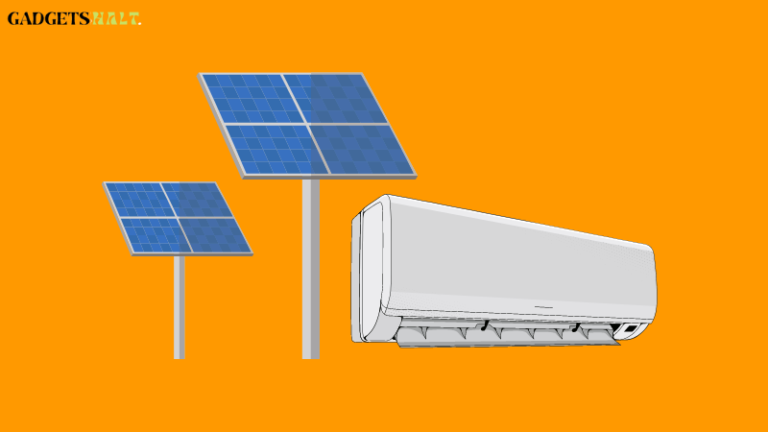Measuring the power of the sun: how to calculate watts from a solar panel
On sunny days, you may have noticed that your lights and TV still work even though the sun is shining brightly outside. Why? Solar energy!
As it turns out, solar panels are great at producing clean energy and harnessing the power of the sun, but it can be tricky to measure exactly how much power they’re producing without some help from your local electrician.
We’ll look at how to calculate watts from a solar panel in this article and give you an easy way to estimate how much power your panels are producing on any given day.
How are watts defined?
Watts is a unit of measurement that defines the amount of power that an electrical device uses. To calculate watts from a solar panel, you need to know the voltage and amperage of the panel. You can find this information on the label of the solar panel. Once you have these two numbers, you can use the following formula: Watts = Volts x Amps. So if your solar panel has a voltage of 18 volts and an amp draw of 10 amps, your calculation would be:
Watts = 18V x 10A = 180W.
If you are interested in calculating kWh or kilowatt-hours (kWh), just multiply the watts by the number of hours per day (24 hours) or days per year (365 days). In this example, for 24 hours per day for 365 days a year, it would be 180 x 365 = 63,900 kWh. In other words, over a one-year period with this configuration and usage pattern, this single solar panel could produce enough energy to power 63 households!
It’s incredible to think about all the implications of our consumption habits, and how small changes like using more efficient light bulbs and investing in renewable sources like solar panels can have huge impacts. As mentioned before, generating clean energy isn’t just good for the environment – it’s also good for your wallet. For those who are still looking to make their home as green as possible, there are plenty of resources out there to help you get started – including free webinars and informative guides available online.
There is a lot of talk about what we consume – but did you know that approximately 30% of electricity generated worldwide comes from coal? Coal produces significant amounts of greenhouse gases, so switching to renewable sources such as solar panels not only benefits our planet – but also reduces pollution levels at home.
Wattage = Voltage x Current
You can measure the wattage of your solar panel by finding its voltage and current and then multiplying those two numbers together. This will give you the amount of power that your panel is producing. You can find the voltage by looking at the markings on the back of the panel, and you can find the current by using a multimeter. Once you have those two numbers, just multiply them together to get your wattage!
Here are some examples of common measurements:
- A typical module has an output voltage between 0.5V and 1.5V (which gives it an output current in the range of 0A to 3A). If it has an output current of 2A, this means that it is producing 2 x 2 = 4W.
- A typical module has an output voltage between 18V and 36V (which gives it an output current in the range of 1A to 5A). If it has an output current of 3A, this means that it is producing 3 x 36 = 108W.
- There are often cases where there isn’t enough information about the module’s voltage or current to make a calculation, which could mean that the module is damaged or defective.
In these cases, it’s best to consult with someone who knows more about what should be going on for your system. They may be able to tell you whether it’s worth troubleshooting, what needs fixing, or whether the problem is bigger than they can handle. It also helps if you know the manufacturer of your module so that they can look up specs on their website. Even if they don’t know specifically what’s wrong, they might be able to provide some advice as to how to proceed next.
Solar panels define their wattage in two ways (Open Circuit Voltage and Short Circuit Current)
Solar panels define their wattage in two ways: Open Circuit Voltage (OCV) and Short Circuit Current (SCC). OCV is the voltage that the panel produces when there is no load on it, while SCC is the current that flows through the panel when it is shorted. To find the wattage, you need to multiply these two values together. For example, if a panel has an OCV of 12 volts and an SCC of 2 amps, its wattage would be 24 watts.
You can measure OCV with a voltmeter, and SCC with an ammeter. To measure OCV, simply connect the voltmeter to the positive and negative terminals of the panel. It should read close to the OCV listed on the side of the panel.
To measure SCC, use your ammeter by connecting one probe to each terminal – one probe should be touching metal and one should touch earth ground, or water pipe. Readings will vary depending on which type of wire you are using; for stranded wire, it’s likely around 2 amps, but for solid core wire it’s likely closer to 4-5 amps.
So, multiply your voltage by your current (the Short Circuit Current) and you have your wattage output.
The power output of a solar panel is measured in watts. To find the wattage of your particular panel, simply multiply the voltage by the current. The voltage can be found on the back of the panel, and the current is typically listed as the Short Circuit Current. Thus, to find your wattage output, simply multiply your voltage by your current. Doing so will give you a good estimate of how much power your panel is capable of producing.
However, this only gives you an estimation of the maximum possible wattage that can be generated under ideal conditions. Depending on where you live and what time of year it is, you may actually generate less than this number (especially if it’s cloudy). So before buying a solar panel for your needs, make sure to do some research into whether or not it’ll produce enough energy for what you need!
Weighing Your Options Solar panels are great at collecting and converting energy from the sun to electricity. But because they don’t work when it’s overcast or dark outside, you might have trouble relying solely on them for all your power needs. They’re also expensive, so unless you have a lot of space, they might not be practical either. Luckily there are plenty of other sources out there to meet your electricity needs too- like wind turbines and hydroelectric plants!
FAQs
How do you calculate watts from a solar panel?
In order to calculate watts from a solar panel, you need to know the voltage and amperage of the panel. You can find this information on the label of the panel. To calculate watts, you multiply the voltage by the amperage. The resulting number is the wattage output of your solar panel.
How do you test 12V solar panel output?
To test the output of your 12V solar panel, you’ll need a multimeter that can measure AC current. First, connect the positive lead of your multimeter to the positive terminal of your solar panel, and the negative lead of your multimeter to the negative terminal of your solar panel. Then, set your multimeter to measure AC current in amps, and make sure it is set to the 20A range. Finally, take a reading and multiply it by 120 to get the number of watts your solar panel is producing.
Remember, if you’re using the appropriate amount of voltage protection on your battery bank, then your charging rate will be limited to whatever wattage your solar panels are putting out. So if you have a 100W solar panel with voltage protection for 14.4 volts or less (in other words no more than about 25 amps), then you will be able to charge at about 4-5 Amps per hour depending on ambient light levels and temperature differences between day and night time temperatures (the latter being worse).
How do I know if my solar panel is 12V or 24V?
To find out if your solar panel is 12V or 24V, look for a label on the back of the panel or check the specs in the manual. If there is no label, you can measure the voltage with a multimeter. Set the multimeter to DC voltage and touch the red lead to the positive terminal and the black lead to the negative terminal. If the reading is above 21 volts, it’s a 24V panel; if it’s below 21 volts, it’s a 12V panel. To calculate watts from a solar panel, you need to know two things: 1) The voltage of your solar panel and 2) The amperage of your solar panel.
How do you measure voltage and current in a solar panel?
In order to measure the voltage and current in a solar panel, you will need a multimeter. First, set the multimeter to measure DC voltage. Then, connect the positive lead of the multimeter to the positive terminal of the solar panel, and connect the negative lead of the multimeter to the negative terminal of the solar panel.
Finally, take a reading and record it. Repeat this process for current measurements by connecting the leads of the multimeter in a different way (positive lead to negative terminal). These two readings are what we use to calculate wattage!




